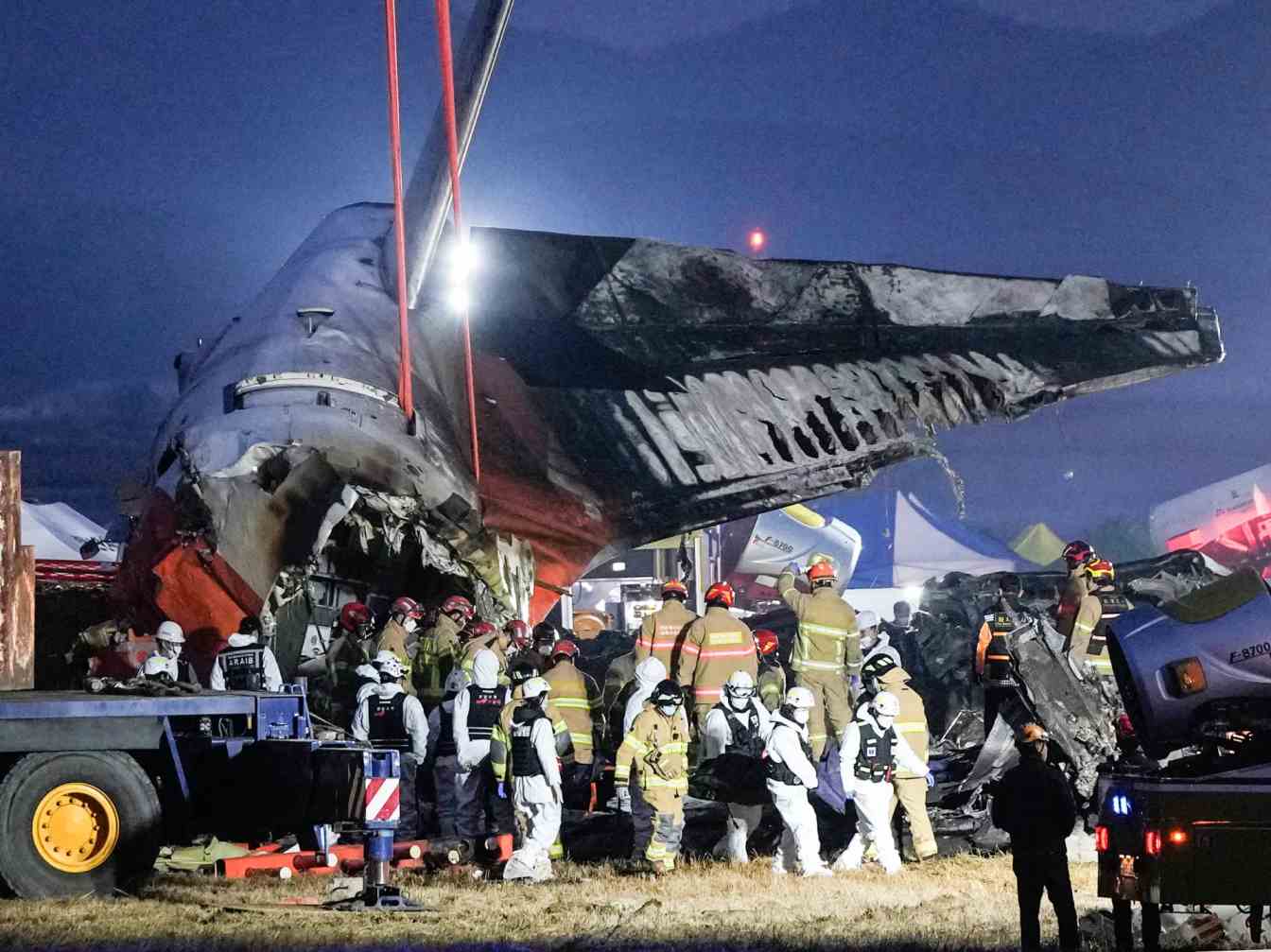South Korean authorities are investigating the country’s deadliest air disaster, after a Jeju Air Boeing 737-800 crashed at Muan International Airport on December 29, killing 179 people. Only two survivors have been rescued from the wreckage.
The Transport Ministry, fire authorities, and a preliminary investigation report reveal that Jeju Air Flight 7C2216 encountered a catastrophic sequence of events during its final approach, triggered by a bird strike that disabled both engines and led to an emergency belly landing.
According to the timeline reconstructed by investigators, the aircraft contacted Muan air traffic control at 8:54 a.m. and was cleared to land on runway 01. At 8:57 a.m., controllers issued a bird activity warning. Seconds later, the pilots reported spotting a flock beneath the plane.
At 8:58 a.m., as the crew initiated a go-around, the plane struck birds mid-air. The right engine surged, emitting flames and black smoke, while the left engine was shut down following emergency procedures.
Shortly after, both the flight data recorder and cockpit voice recorder stopped functioning, cutting off critical information as the plane flew at 498 feet and 161 knots.
The pilots issued a Mayday distress call and requested to land on runway 19 the opposite end of the airport’s only runway. At 9:01 a.m., they were granted clearance.
Flight 7C2216 touched down belly-first at 9:02 a.m., approximately 1,200 meters down the 2,800-metre runway. The landing gear had not been deployed. Seconds later, the aircraft overshot the runway and slammed into an embankment.
Emergency crews were immediately alerted, deploying fire and rescue equipment within seconds. The first survivor, a male passenger, was rescued at 9:23 a.m., followed by a second person found in the tail section at 9:50 a.m. The airport was closed by 9:38 a.m.
A July 19 update from investigators confirmed that the aircraft suffered dual engine failure, with CVR and FDR evidence pointing to the bird strike as the initial trigger. The crash has raised renewed concerns over bird hazard management and emergency preparedness at regional airports.
South Korea’s aviation authorities continue to comb through flight data and debris as part of a full-scale investigation.

